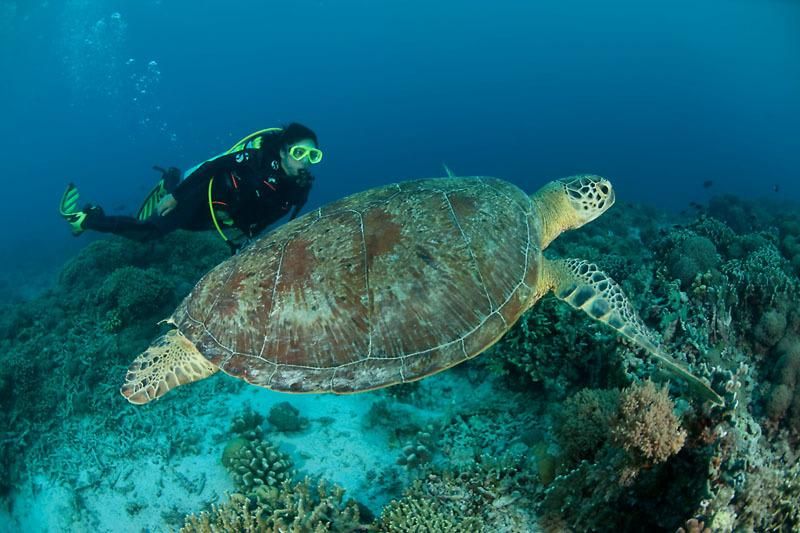Three Things to Know About the Coral Triangle, the Ocean’s Biodiversity Hot Spot
At more than a billion acres of ocean, the Coral Triangle is one of the world’s biggest and most important marine regions
/https://tf-cmsv2-smithsonianmag-media.s3.amazonaws.com/filer/7d/ef/7def7550-6f32-4bf1-a863-9a3062dac5af/8965496796_1bbafd31d9_o.jpg)
It’s off-fish-ul: Today is World Oceans Day. And tomorrow marks another briny milestone: Coral Triangle Day, a day dedicated to celebrating the biggest coral region in the ocean.
The Triangle is a billion-acre ocean region controlled by Indonesia, Malaysia, Philippines, Papua New Guinea, Solomon Islands and Timor-Leste. Unlike some other coral-rich areas like the Great Barrier Reef, the Coral Triangle isn't a household name. But it's importance to Southeast Asia and the world's oceans can't be downplayed: The region encompasses a full 30 percent of the world's coral and has the highest diversity of corals and fishes in the world. It's a place to know—especially if you're concerned about conservation and coastal communities, which many are.
Here are three need-to-know facts about the Coral Triangle:
It’s been called “the Amazon of the ocean”
Like the Amazon rainforest in comparison to other forest regions, the Coral Triangle is home to diversity found nowhere else in the reef system. More than 75 percent of the world’s coral species–over 600 species–live in the Triangle, and the area contains more than 30 percent of all the world’s coral reefs.
But the coral is only the start of the diversity in this living system. “The Coral Triangle has more coral reef fish diversity than anywhere else in the world,” writes the World Wildlife Federation. Of the 6,000 currently known species of reef fish, 37 percent of the world’s coral reef fish live in parts of the Triangle. Two hundred and thirty-five of those species are found nowhere else.
Six out of the world’s seven marine turtles live in regions of the Coral Triangle. So do aquatic mammals like blue whales, sperm whales and dolphins and endangered species like dugongs. The list is long. In fact, writes the WWF, the criteria used to define the Coral Triangle relied on high species diversity–higher than that of nearby reefs in Australia and Fiji.
It’s a stunning array of diversity that scientists from the Smithsonian Institution and elsewhere are working hard to understand–even as it might be fading away.

It may be where coral reefs began
“The theory is that this is where coral reefs started,” says naturalist Chris Cook in the National Geographic documentary below. Today, the Triangle is the center of diversity for ocean life, and research in reef sciences has suggested that it was the historic point of origin for many coral species as well as many of the species that live there.
Paleontologists are studying ocean in the Triangle to get a sense of what the underwater past looked like. “The ancient diversity of the Coral Triangle can tell us much about how life has adapted to changing conditions in the past, and how life may well adapt again in the future,” writes Britain’s National History Museum.
Among the abundant species Cook and his colleagues observed recently: the cuttlefish, a species which itself has been around for more than 500 million years. “It’s hard to explain. You have to see it,” Cook says. “It’s a mollusc. It’s related to a clam. And it just displays such intelligence.”
It’s in danger exactly because of its abundance
Like reefs everywhere else on the planet, the Triangle is in critical danger because of human-produced factors. It’s in danger from localized threats like cyanide fishing for rare aquarium fish that live in its waters. THis practice damages fish communities and the surrounding environment. But it’s also in danger because of huge threats, like anthropogenic climate change, which is warming the seas as they become more acidic, resulting in conditions where many species of coral can’t live.
On top of that, coral bleaching and white syndrome are immediate threats to many species of coral that dominate the Triangle–the Acropora corals. “In the next century, maybe all coral reef researchers will be paleontologists,” one coral researcher said to the Natural History Museum.
But there’s hope that parts of the Coral Triangle may be refuges for marine life once again. “High levels of biodiversity, coupled with fast rates of growth and recovery, put many Coral Triangle ecosystems in a favorable position to survive climate change,” writes the World Wildlife Fund.

